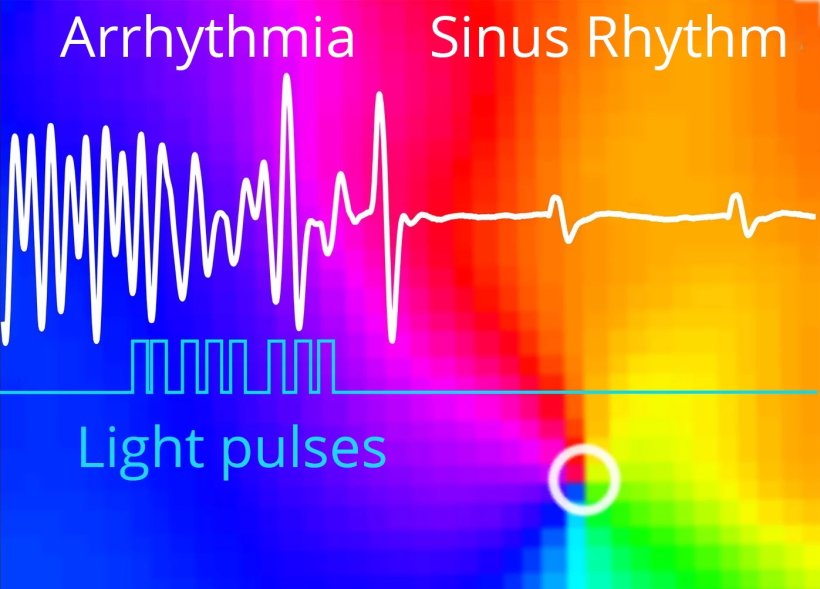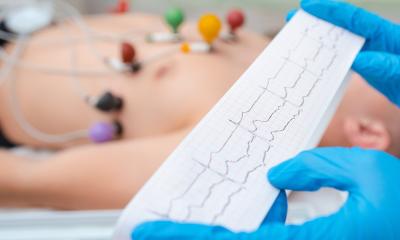
© MPI-DS, Biomedical Physics Group
News • Cardiac arrhythmia treatment
Stop the shocks: developing 'gentle' defibrillation for the heart
Using light pulses as a model for electrical defibrillation, Göttingen scientists developed a method to assess and modulate the heart function.
The research team from the Max Planck Institute for Dynamics and Self-Organization (MPI-DS) and the University Göttingen Medical Center thus paved the way for an efficient and direct treatment for cardiac arrhythmias. This may be an alternative for the strong and painful electrical shocks currently used.
The researchers present their findings in the journal Chaos.
Instead of administering a single high-energy shock to restore normal heart rhythm, we use our understanding of the dynamics of cardiac arrhythmias to gently terminate them
Sayedeh Hussaini
Cardiac arrhythmias account for around 15-20% of annual deaths worldwide. In case of acute and life-threatening arrhythmias, defibrillators can be used to restart the regular beating of the heart. A strong electrical pulse brings cardiac activity to a brief standstill before it can be resumed in an orderly way. Whereas this treatment can save lives very effectively, the strong electrical pulses can also have negative side effects such as damage of the heart tissue or strong pain. “We developed a new and much milder method which allows the heart to get back into the right rhythm,” says Stefan Luther, Max Planck Research Group leader at the MPI-DS and professor the University Göttingen Medical Center. “Our results show that it is possible to control the cardiac system with much lower energy intensity,” he continues.
To test their method, the scientists used genetically modified mouse hearts that can be stimulated by light. In this setting, a sequence of optical light pulses is triggered using a closed-loop pacing algorithm. Each pulse is triggered in response to the measured arrhythmic activity. With this pacing protocol, the team was able to effectively control and terminate cardiac arrhythmias even at low energy intensities that do not activate the heart, but only modulate its excitability. “Instead of administering a single high-energy shock to restore normal heart rhythm, we use our understanding of the dynamics of cardiac arrhythmias to gently terminate them.” explains Sayedeh Hussaini, first author of the study. “This results in a subtle treatment method with far less energy per pulse, more than 40 times less compared to the conventional strategy” she reports.
The research team will also use these findings to improve the control of arrhythmias using electrical pulses. This may result in advanced defibrillators causing less pain and side-effects for patients.
Source: Max Planck Institute for Dynamics and Self-Organization
28.04.2024











